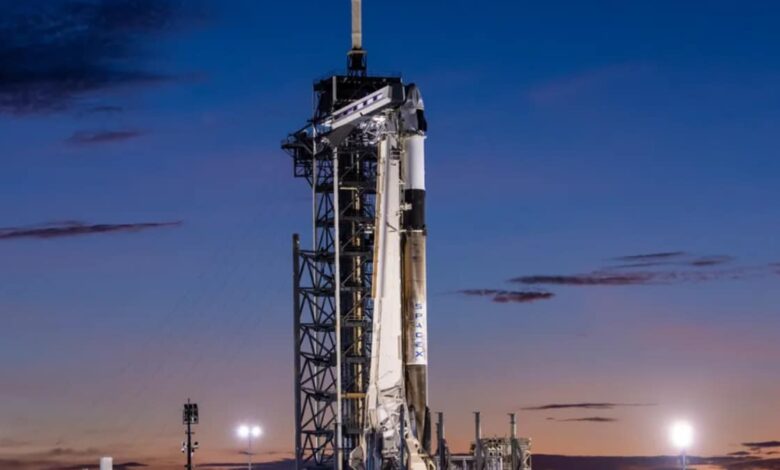Everything You Need to Know About the SpaceX Polaris Dawn Mission

SpaceX Polaris Dawn mission was scheduled to launch on Tuesday, August 27, but faced a technical setback due to technical issues. The mission, which will be launched by a SpaceX Falcon 9 rocket carrying the Crew Dragon capsule, is notable for the first-ever privatized spacewalk. It is being funded by billionaire Jared Isaacman – the founder of electronic payments company Shift4, with an estimated investment of over $100 million (approximately Rs. 839 crore).
Despite the setback, SpaceX has assured that both the Falcon 9 rocket and the Crew Dragon capsule are in good condition and that the crew is prepared for their journey to low Earth orbit.
Mission Overview
Polaris Dawn is the first mission under the Polaris program, a human spaceflight initiative funded by billionaire Jared Isaacman. Isaacman, who will lead the mission, will be joined by pilot Scott “Kidd” Poteet, a former U.S. Air Force lieutenant colonel, and SpaceX engineers Sarah Gillis and Anna Menon. The mission’s most notable feature is a planned spacewalk, scheduled for Day 3, which will mark the first extravehicular activity (EVA) on a commercial mission.
The meaning of Polaris Dawn
This mission is significant not only for the planned spacewalk, but also for the role it will play in pushing the boundaries of commercial space exploration. Polaris Dawn is expected to pave the way for future missions under the Polaris program, and set new milestones in human spaceflight.
The crew readiness and robust design of the Falcon 9 and Crew Dragon systems indicate that, despite the delay, the mission holds promise and will be successful.
Reason for delay
The mission delay is due to a ground-side helium leak on the Quick Disconnect umbilical, a critical interface that connects the Falcon 9 rocket to the launch tower. Although helium is not used as a propellant, it plays a critical role in pressurizing the fuel lines that feed the Falcon 9’s Merlin engines. The mission’s targeted altitude of 870 miles (1,400 kilometers) will take the crew farther from Earth than any crewed mission since Apollo 17 in 1972.
New launch schedule
The Polaris Dawn mission will now attempt to launch at 3:38 a.m. EDT (7:38 a.m. GMT) on Wednesday, with two additional backup opportunities at 5:23 a.m. EDT (9:23 a.m. GMT) and 7:09 a.m. EDT (11:09 a.m. GMT). Space enthusiasts can watch the launch livestream via SpaceX’s webcast, which begins around midnight EDT (4 a.m. GMT).




